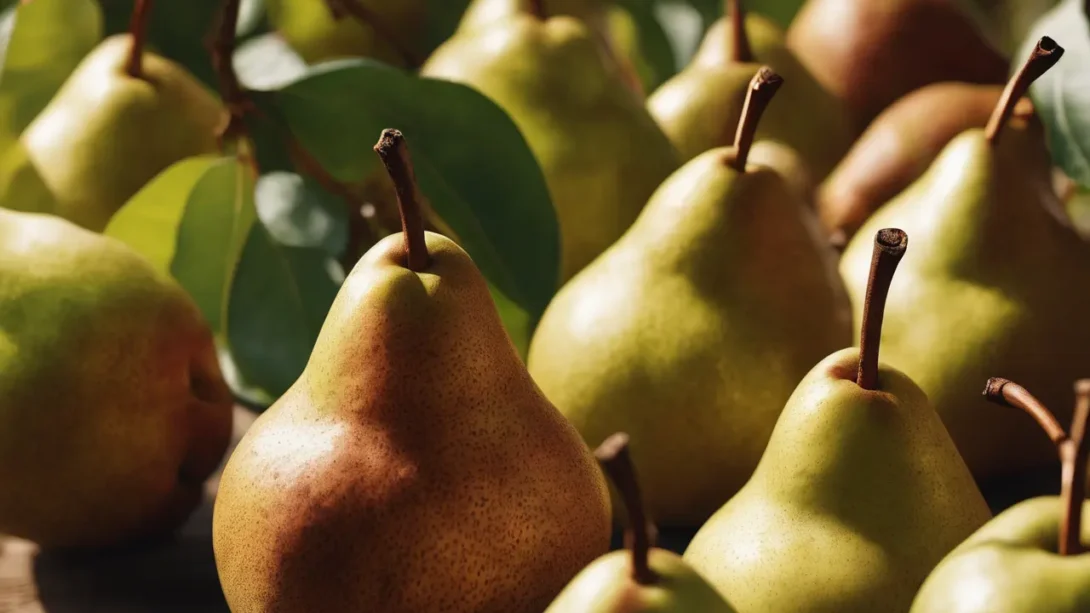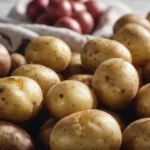Pears are among the few fruits that ripen off the tree, making the timing of their harvest unique. Unlike many fruits that reach peak ripeness while still attached to their branches, pears are best picked when mature yet firm, and then allowed to ripen to perfection off the tree. This characteristic underscores the importance of knowing precisely when a pear is ripe and ready to eat. Picking or purchasing pears at the right stage of ripeness not only ensures the best flavor and texture but also maximizes their nutritional benefits. This guide will provide you with all the necessary insights to identify a ripe pear, ensuring you enjoy this delicious fruit at its best.
Pear Varieties
Pears come in a wide array of varieties, each with its own unique flavor, texture, and season. Common varieties include Bartlett, Anjou, Bosc, and Comice, each ripening at different times of the year and exhibiting distinct characteristics. For instance, Bartlett pears turn a vibrant yellow when ripe, while Bosc pears maintain their brown color but soften slightly. Understanding these differences is crucial for determining ripeness, as each variety has its own set of cues. Familiarizing yourself with the peak seasons and ripening indicators of the varieties available in your area can enhance your pear-eating experience.
Visual Indicators of Ripeness
Color Changes
One of the first signs of a pear’s ripeness can be its color. For many varieties, a subtle shift in hue indicates that the pear is approaching its peak. Bartlett pears, for example, change from green to yellow, signaling they’re ready to be enjoyed. However, color alone can be deceptive, as some varieties like Bosc and Anjou undergo minimal color changes. It’s essential to consider other ripeness indicators in conjunction with color changes to accurately gauge a pear’s ripeness.
Skin Texture
The texture of a pear’s skin also offers clues about its ripeness. As pears mature, their skin can become slightly softer and may even develop a slight give when gently pressed. Additionally, ripe pears often exhibit a subtle sheen, indicating that the fruit’s sugars are coming to the surface. However, it’s important to handle pears gently, as their delicate skin can bruise easily, affecting both their appearance and taste.
Tactile Methods to Assess Ripeness
The Neck Test
One of the most reliable methods to determine if a pear is ripe is the neck test. To perform this simple check, gently press the pear near its stem, at the narrowest part of the “neck.” If the flesh yields slightly under pressure, the pear is ripe and ready to eat. This method is particularly effective because the neck of the pear ripens first. If there’s no give in the neck, the pear needs more time to ripen. Be careful to apply only gentle pressure to avoid bruising the fruit.
Firmness
Apart from the neck test, the overall firmness of the pear is a good indicator of its ripeness stage. A ripe pear should feel firm but not hard. The body of the pear, especially around its widest part, should yield slightly to gentle pressure, indicating that the flesh inside is soft and juicy. However, if the pear feels too soft or mushy, it may be overripe. This balance between firmness and softness is key to finding a pear at its peak of flavor.
Other Signs of Ripeness
Aroma
A ripe pear will often emit a sweet, floral aroma from the base of its stem. This fragrance is a clear signal that the pear’s sugars have developed sufficiently, making it ready to be enjoyed. Smelling a pear can be one of the most pleasant ways to check for ripeness, especially for varieties that do not show significant color change or have a firmer texture even when ripe.
Stem Detachment
Another subtle yet telling sign of a ripe pear is how easily the stem detaches from the fruit. In mature pears, the stem will come away with minimal effort when lifted gently. This sign is more commonly used by growers to determine the right time for harvesting rather than by consumers, but it’s useful knowledge for those who grow their own pears or pick them from a local orchard.
How to Ripen Pears at Home
If you’ve brought home pears that are mature but not yet ripe, there are simple ways to encourage ripening. Placing pears in a paper bag at room temperature can speed up the ripening process. The bag traps ethylene gas, produced naturally by fruits, which stimulates ripening. For even faster results, add a ripe banana or apple to the bag, which will increase the concentration of ethylene gas. Check the pears daily using the neck test to determine when they’ve reached perfect ripeness.
Storing Ripe Pears
Once your pears have ripened to perfection, proper storage is key to extending their freshness and enjoying them at their best. Ripe pears are best kept in the refrigerator, where they can last for several days to a week. Store them in the crisper drawer to avoid ethylene gas accumulation, which could accelerate ripening and lead to overripening. If you have a large quantity of ripe pears, consider wrapping each pear individually in paper to minimize bruising and extend their shelf life.
Temperature and humidity control are crucial factors in pear storage. The ideal refrigerator temperature for storing ripe pears is between 35°F and 40°F (1.7°C to 4.4°C), with a relative humidity of 90% to 95%. These conditions help preserve the pears’ texture and flavor while slowing down the ripening process. If you plan to consume the pears within a day or two, they can be left on the countertop at room temperature, which may further enhance their flavor.
Conclusion
Identifying when a pear is ripe involves observing a combination of visual cues, employing tactile methods, and detecting aromatic signals. From the color changes and skin texture to the neck test and the sweet scent of ripeness, each indicator plays a crucial role in determining the perfect time to enjoy a pear. Additionally, understanding how to ripen pears at home and the best practices for storing them can significantly enhance your pear-eating experience.
Pears, with their delicate flavor and succulent texture, are a true delight when eaten at the peak of ripeness. By applying the knowledge shared in this guide, you can ensure that you’ll enjoy the best that this wonderful fruit has to offer. Remember, the key to a delicious pear is patience and attention to its ripeness cues.




